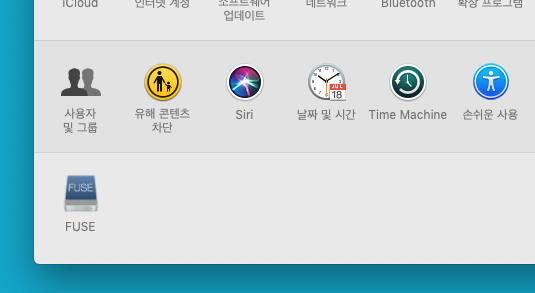

- #Osx ednable csrutil after openzfs install how to#
- #Osx ednable csrutil after openzfs install code#
- #Osx ednable csrutil after openzfs install mac#

In the Terminal window, type in csrutil disable and press Enter.
#Osx ednable csrutil after openzfs install mac#
#Osx ednable csrutil after openzfs install how to#
Here's how to do it if you really need to:Īpple's documentation covers disabling SIP, About System Integrity Protection on your Mac and Configuring System Integrity Protection.Īn article on lists these steps: If you're developing for another platform such as deployment to a web server, then you can't share your development environment setup with other developers on your team without compromising their security as well.
#Osx ednable csrutil after openzfs install code#
If you're developing mac apps, then your system becomes less useful as a testbed because you don't know if your code only works because you hacked your system. if you require a legacy kernel extension such as MacFUSE on an M1 macĪlso important beyond the security implications is the fact that anything you do on a mac with SIP disabled will not work on anyone else's mac unless they also disable it first.if you are attempting to modify core operating system functionality for deployment in a highly-specialized environment such as a public-facing kiosk.if you're doing research on malware yourself in a disposable environment, such as in a macOS virtual machine.Valid reasons to disable SIP yourself might be: The system-provided tools may be convenient to bootstrap, but if you require SIP exceptions for your daily workflow you are almost certainly doing things in a way which will break in a future version of the operating system, and may break applications and other system functionality in the meanwhile.

If you are simply trying to configure system development tools such as vim, python2, ruby and so on, you almost certainly want to be just installing community-maintained versions from Homebrew and configuring those instead. Failure to reenable SIP when you are done testing leaves your computer vulnerable to malicious code. It worked!, I've launched the application and no more crashing.īut i felt empty since going so far just to allow loading an app that I think I won't even keep, and as I've found the source code (Python) i was able to find the line of code that pointed to the protected /usr/lib and just redirected it to where the file was and also the problem was solved, so I want to have csrutil fully enabled.Note: disabling System Integrity Protection is dangerous, and makes your system more vulnerable to malware.Īs Apple puts it in the developer documentation about SIP: Warningĭisable SIP only temporarily to perform necessary tasks, and reenable it as soon as possible.

It all started when an application was crashing (under MacOS BigSur) because it could not found a file /usr/lib/libcrypto.dylib, my first idea was to add a symlink there to the library as it was a file of openssl. So currently the only way the system boots is if csrutil and csrutil authenticated-root are disabled. I tried undoing the process (described below in this case leaving the /usr/lib as it was originally removing the symlink I've added) and then enabling csrutil in recovery mode but still Mac System won't boot. How to re-enable csrutil and csrutil authenticated-root and get the mac to load?Īfter having mounted a new boot Volume with a small modification to the folder /usr/lib I am unable to enable csrutil and csrutil authenticated-root, since the Mac won't boot. Acabra85 Asks: Re-enabling csrutil prevents mac from booting after a new apf image mounted


 0 kommentar(er)
0 kommentar(er)
